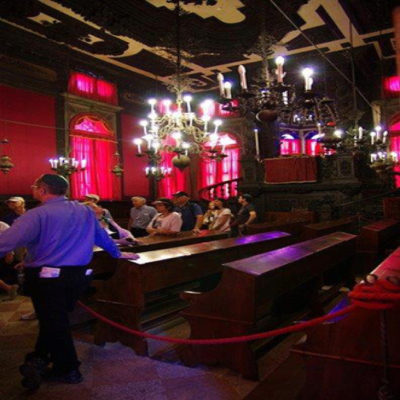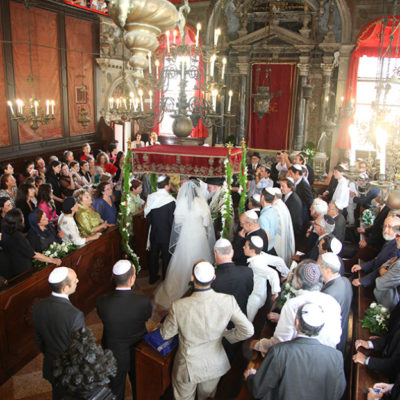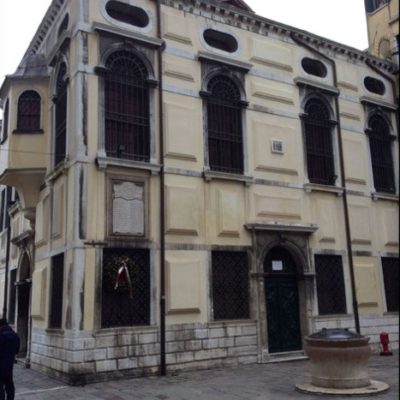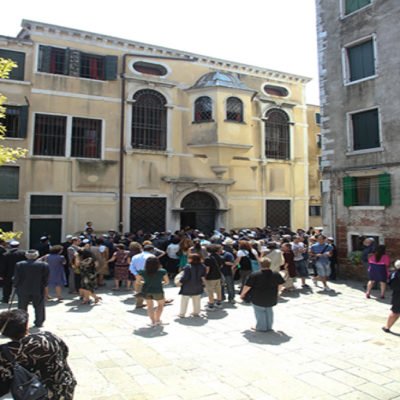Levantine Jews built this synagogue between 1538 and 1561. It was then rebuilt in the course of the 17th century, and some elements of the façade suggest that it was designed in the workshop of Longhena.
The entrance in use is on Calle del Ghetto Vecchio; from the entrance hall, a staircase leads to the synagogue on the first floor. Above the doorway note the liagò, or loggia, which houses the bimah.
The sanctuary retains the traditional bi-focal layout with the aron and bimah on opposite walls. The sumptuous interiors are embellished by woodwork, plasterwork and red damask textiles. The most striking element is the bimah, an imposing carved walnut structure painted black, possibly designed by Andrea Brustolon of Belluno (1660-1732). Two lateral semi-circular staircases lead to the officiant’s raised level; the balustrade of the podium is flanked by twisting columns decorated with plant motifs, supporting the high canopy.
Equally impressive is the aron, on the opposite wall. Similar to that in the Scola Spagnola, it is framed by an archway with a sky blue, starry background. An architectural structure with columns and double tympanum encloses the doors of the ark. The steps leading up to it are enclosed by a balustrade in multi-coloured marble, and a brass gate made in 1786.
The Scola Levantina is still used regularly, alternating with the Scola Spagnola.
Calle Ghetto Vecchio, 1154 – 30121 Venice
In the summer months, guided tours depart at regular intervals, run by the Jewish Museum of Venice.




